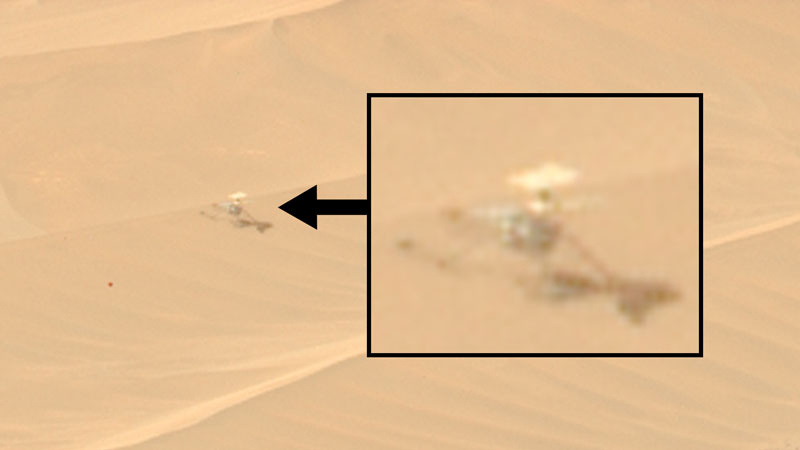
NASA has shared an image of the Ingenuity helicopter standing alone on a Martian dune – it broke down during its last flight and will never rise above the surface of the Red Planet again. The rover will move further and further away from him until the connection is broken.
The Ingenuity helicopter became the first aircraft to ascend into the atmosphere outside the Earth. It was even assigned an ICAO code, which is all that is required in adult aviation. The 1.8 kg device was designed for 5 flights, which was supposed to prove the possibility of flying in the atmosphere of Mars, whose density at the landing site is only 1% of the Earth’s. The helicopter has made 72 takeoffs and landings in almost 3 Earth years. It’s not even a success – it’s a triumph of engineering.
During the final or fatal flight on January 18, 2024, something went wrong at the moment of landing and the helicopter hit the surface of Mars with its blades. The helicopter’s navigation camera showed a shadow of one blade, the tip of which appeared to be chipped. It is likely that the other blades were also damaged, which NASA is still checking. The rotation speed of the Ingenuity blades reaches 42.3 rpm. No matter how strong the blades are, the impact will be strong enough to damage them. Even the slightest distortion will disturb the balance, making controlled flights impossible.
After completing its scientific program, the helicopter began to help with the reconnaissance of the route for the Perseverance rover’s advancement through the Jezero crater. The helicopter was also used to search for the most interesting places to study the rover’s equipment. The helicopter spent 128.8 minutes in flight during the entire Mars flight, flying about 17 km at an average speed of 10 m/s. The maximum altitude reached 24 meters, although it usually flew at an altitude of about 10 meters.
The photo of the lone helicopter was taken by the Perseverance rover with the Mastcam-Z camera, which is the main scientific camera of the vehicle. The image was acquired on February 4, 2024, at 13:05 local solar time, a little more than two weeks after the helicopter sustained damage incompatible with continued flight operations.

